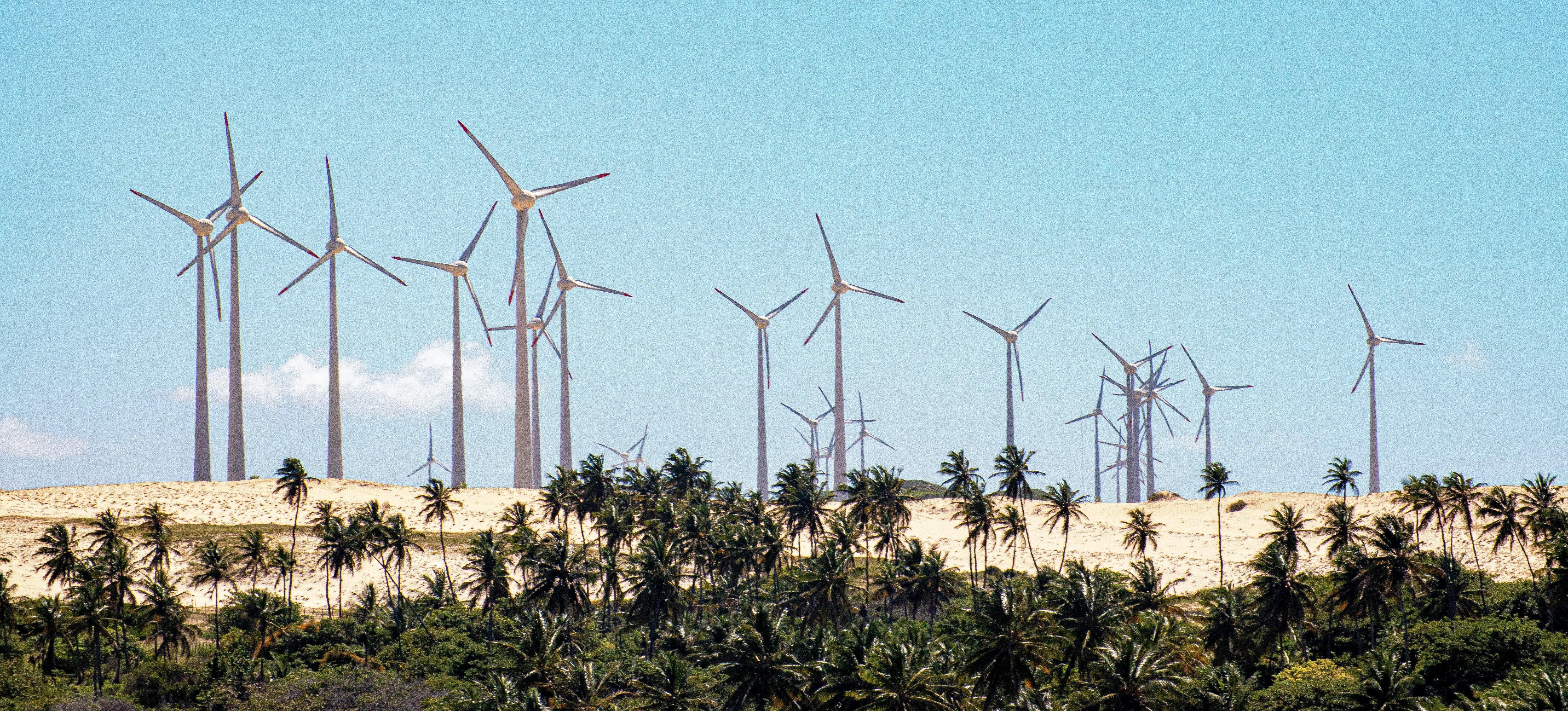Opinion
How investing in coal phase-out can lead to an $85 trillion opportunity
Image: Daniel Morris/Unsplash
Stay up to date:
Energy Transition
- Accelerating the phase-out of coal could unlock a global economic opportunity worth $85 trillion, according to the International Monetary Fund (IMF).
- Significant financial challenges, especially in coal-dependent emerging economies, hinder the transition despite potential benefits.
- Public-private partnerships are essential for managing risks and ensuring a sustainable coal-to-clean energy transition.
Accelerating the phase-out of coal, the world’s most polluting fossil fuel, will make or break our chances of limiting the most catastrophic impacts of climate change. The economic case for coal phase-out is indisputable – the IMF estimates that the world would realise a net gain of $85 trillion from phasing out coal power on a 1.5°C-aligned timeline.
Yet, we are not where we need to be. We need to reduce coal emissions five times faster to achieve this goal as coal is the greatest global contributor to carbon emissions. As the IMF points out, a key economic principle is ensuring that ‘value isn’t left on the table’. So why aren’t we investing at the scale we need to in the coal phase-out?
Have you read?
Access to capital faces several challenges
Coal isn’t cheap. The enormous costs of the damage caused by coal through climate change far outweigh phasing it out and replacing it with renewable energy. Such a transition is an $85 trillion opportunity - 1.3% of current world GDP per annum leading to 2100.
Likewise, new renewables are now much cheaper than new coal and existing coal power plants in most cases. Replacing coal with clean power may have saved electricity customers $39 billion in 2020, $86 billion in 2022, and a further $141 billion in 2025, according to a 2020 analysis.
Rewiring the economy is a substantial challenge. This is especially true in emerging economies with high coal dependence, where young coal power plants are built with debt that has still not been paid off alongside having fast-growing electricity demand. The transition requires substantial upfront investment and accessing it is not easy in an environment of high interest rates.
How is the World Economic Forum fighting the climate crisis?
Scaling finance: a public-private partnership
The benefits of a coal-to-clean transition will be felt globally in reduced climate risk. There is a strong case for using international public finance to help emerging economies access the upfront investment they need. Vehicles for this already exist. For example, CIF ACT is a concessional fund dedicated to coal transitions and Just Energy Transition Partnerships have been established to support the transition out of coal in Indonesia, Vietnam and South Africa.
However, given the scale of the challenge, public finance alone will not be enough. We also need private finance. Clear economic benefits suggest that leveraging private finance should be possible, and again there are great examples already where this is being done.
In Chile’s coal-dependent region of Tocopilla, coal plant owner, Engie, established a blended finance mechanism to close its final coal unit in 2022 and replace it with 151 MW of wind. In the Philippines, Powering Past Coal Alliance member ACEN has brought forward the retirement date of the SLTEC coal plant by selling its equity stake to private investors who could lower the cost of capital. In Indonesia, the Asian Development Bank is working with the Indonesian government and private sector partners to look for ways to shut Cirebon –1, a 660MW coal-fired power plant ahead of schedule.
But we are not moving fast enough – so what is the problem?
Managing risks
There are several risks involved in investing in the transition. Replacing coal power with renewables is a process that requires time and political support. Investors need to be confident that the right policy support will be in place and plans will not be changed or reversed.
Green finance vehicles can offer a way of reducing the cost of capital, but investors need to be confident that their investments will genuinely reduce emissions. They need to know that emissions reduced at one coal power plant will not be offset elsewhere. They also need to know that the right market and grid support will be in place for new renewables.
The Powering Past Coal Alliance looks to address these challenges by encouraging governments and utilities to develop long-term credible energy plans including commitments to no new coal and a timeline for coal phase-out.
Investment not divestment is the answer
Alongside these real risks, another factor preventing the flow of finance to coal transitions, is a belief that firms should avoid all investments in coal power and other high-emitting sectors. Yet, building out new renewables is only one side of the transition coin. The other side is supporting the reduction of emissions and eventual retirement of existing coal power plants.
Plans need to be made to repay or renegotiate debts incurred in building these plants, long-term contracts to provide energy to the grid need to be restructured, and workers and communities who have been dependent on the operation of the plants need to be engaged and supported to plan for the future.
When responsible investors decide their only option is to sell high-emitting assets, they are often replaced by less scrupulous or less resourceful investors focused only on extracting maximum return by running the power plant for as long as possible with little thought to the long-term future of the community. Rather than quitting high emitting sectors, financial institutions with net zero commitments need to be encouraged to engage and invest in these sectors supporting them to find ways to reduce emissions and retire early.
There are already great examples of institutions doing just this. For example, HSBC, a Powering Past Coal Alliance member, is supporting efforts to repower coal power plants for use as heat stores or grid interconnection points for renewable energy. Unfortunately, the lack of consensus and clear regulatory framework chills work in this area.
How do we address these challenges?
Two key issues need to be addressed.
Firstly, this is a new area and there are many risks. To scale investments, guidance needs to be developed with and for financial institutions on how these risks can be responsibly managed.
This work is already underway. Last year the Glasgow Finance Alliance for Net Zero worked with its members to create guidance for financial institutions on how to actively manage risks as they invest in coal power plants to phase them out. In addition to this, financial institutions need support and recognition. Regulators should be clear that investing in reducing emissions from existing coal power plants can be counted as a sensible use of transition finance as long as risks are responsibly managed.
The Powering Past Coal Alliance is issuing a revised set of finance principles this autumn to guide firms as they consider what actions to take in this area based on their own individual contexts. The finance principles make it clear that engagement and investment in the managed phase-out of coal should be at the heart of net zero aligned thermal coal policy.
Yet while, with a membership of almost one third of the world’s governments and financial institutions with over $17 trillion dollars of assets under management, we are an important voice, it is in government policy and regulation that we really need to see this change. This is why we are supporting the Coal Transition Commission, a new initiative led by the Indonesian and French governments designed to accelerate the coal transition. This initiative builds on the Powering Past Coal Alliance principle that we need to bring governments, financial institutions, regulators and utilities around the table together to build the necessary consensus on the pathway to be taken, the ways to manage and the roles of each stakeholder.
At COP29 in Baku, the Commission will issue its first set of conclusions and recommendations including on how to build an enabling environment to unlock the $85 trillion opportunity.
For more, click here to see the World Economic Forum's work on the move from coal to renewable energy.
Don't miss any update on this topic
Create a free account and access your personalized content collection with our latest publications and analyses.
License and Republishing
World Economic Forum articles may be republished in accordance with the Creative Commons Attribution-NonCommercial-NoDerivatives 4.0 International Public License, and in accordance with our Terms of Use.
The views expressed in this article are those of the author alone and not the World Economic Forum.
Forum Stories newsletter
Bringing you weekly curated insights and analysis on the global issues that matter.
More on Energy TransitionSee all
Why India’s carbon market needs a price stability mechanism for its new Carbon Credit Trading Scheme
Subham Shrivastava and Saurabh Trivedi
November 10, 2025
Andrea Willige
November 10, 2025
Network of the Global Future Councils and Kaiser Kuo
November 4, 2025
Esther Finidori and Lisa Wee
November 4, 2025
Ezgi Canpolat and Varalakshmi Vemuru
November 3, 2025
Ayla Majid
October 30, 2025





